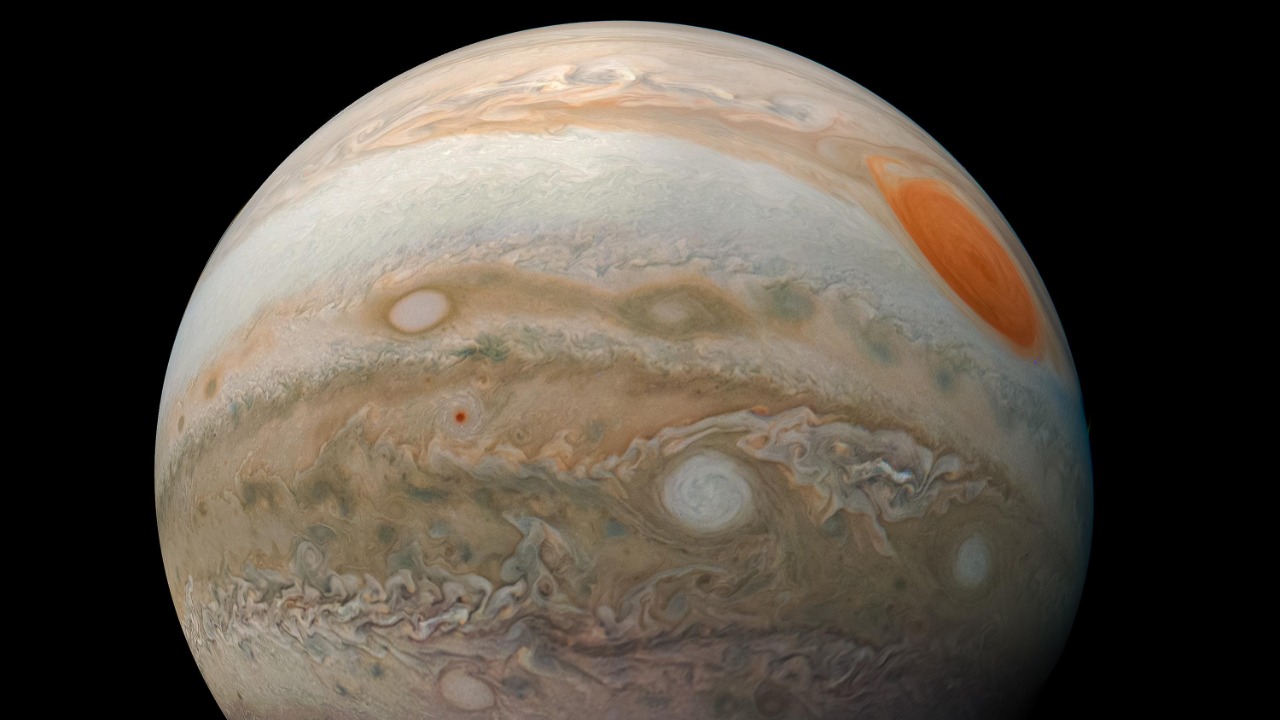
Planetary scientists have recently drawn a connection between the birth of Jupiter and the formation zone of Earth, suggesting a shared origin in the early solar system. This revelation not only influences our understanding of planetary development but also sheds light on how the migrations of gas giants could have shaped the inner planets and the asteroid belt. The studies also delve into intriguing scenarios where the asteroid belt might have coalesced into a super-Earth, which could have significantly altered Earth’s potential fate.
Jupiter’s Early Formation Dynamics
The birth of Jupiter, a gas giant, is believed to have occurred through a process known as core accretion. This process, which involves the rapid growth of a planet within the protoplanetary disk, is a key aspect of Jupiter’s formation. Recent linkages in planetary science suggest that this growth was particularly rapid around the same time as Earth’s formation.
Further insights into Jupiter’s early formation dynamics can be gleaned from the concept of Jupiter-Saturn chaotic excitation. This theory, published in 2023, details how orbital instabilities drove Jupiter’s migration and influenced the distribution of surrounding material. The chaotic excitation between Jupiter and Saturn played a significant role in shaping the early solar system.
Earth’s Formation Zone Characteristics
The formation zone of Earth, located in the inner solar system, was defined by specific temperature and density gradients. These gradients played a crucial role in the accumulation of rocky planetesimals, which eventually coalesced to form our planet. However, the process of terrestrial planet formation was not without disruptions, particularly from the external gravitational influences of migrating gas giants like Jupiter and Saturn.
Interestingly, there is compositional evidence that suggests shared disk regions between Jupiter and Earth’s formation zones. This overlap, as indicated by Jupiter facts, provides further support for the theory of a shared origin in the protoplanetary disk.
Shared Origins in the Protoplanetary Disk
Models of disk evolution provide compelling evidence of the overlap between Jupiter’s birth and Earth’s formation zone. These models suggest that the birth of Jupiter and the formation of Earth were not isolated events but were part of a larger, interconnected process within the protoplanetary disk.
The effects of Jupiter-Saturn chaotic excitation were not limited to the gas giants themselves. This process also had a significant impact on the scattering of materials into the inner solar system. Furthermore, insights into the formation of the asteroid belt show that remnant materials from this process tie the formation zones of Jupiter and Earth together.
Role of Gas Giant Migrations
The migration of gas giants, particularly Jupiter, had a profound impact on the early solar system. This migration reshaped the Earth’s formation zone through dynamical instabilities, influencing the formation and evolution of inner planets. The mechanisms of Jupiter-Saturn chaotic excitation, including resonance effects on inner orbits, played a significant role in this process.
These migrations also had implications for the delivery of volatiles to terrestrial planets. The movement of gas giants could have facilitated the transport of these essential elements from the outer regions of the solar system to the inner planets, including Earth.
Impacts on the Asteroid Belt
The birth of Jupiter had a significant impact on the asteroid belt. The gravitational influence of the gas giant excited the planetesimals in the belt, leading to their scattering and depletion. This process, coupled with the effects of Jupiter-Saturn chaotic excitation, played a crucial role in the formation of the asteroid belt.
Scientists have also considered the hypothetical scenario of a super-Earth developing in the asteroid belt. Such a development could have significant ties to Earth’s formation zone and could drastically alter our understanding of the solar system’s evolution.
Implications for Solar System Evolution
The birth of Jupiter and its subsequent migration have long-term implications for the stability of Earth’s formation zone. The gas giant’s influence likely played a role in shaping the conditions that allowed life to develop on Earth.
The outcomes of terrestrial planet and asteroid belt formation also have implications for habitability factors. The presence of a potential super-Earth in the asteroid belt, for instance, could have had a shocking impact on Earth’s development and the evolution of life.
Future Research Directions
Future research could build on the linkages between Jupiter’s birth and Earth’s formation zone to refine models of planetary migration. Observations targeting remnants of Jupiter-Saturn chaotic excitation could provide further insights into the early solar system.
Additionally, studies on alternatives to the current asteroid belt could test the influence of Earth’s formation zone on the evolution of the solar system. These research directions could significantly enhance our understanding of our home in the cosmos.
More from MorningOverview